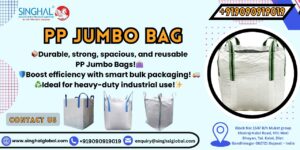And in an everchanging world where farmers need to produce food in a sustainable way and to use materials that are long-lasting, the Polypropylene multifilament yarn also known as PP multifilament yarn is one of the silent yet impressive shockwaves. Ingredients in shade nets to stitching sacks of agricultural produce, this apparently humble yarn has turned into an underpinning to agricultural strength.
So what is PP multifilament yarn? What is the reason behind its favorability in outdoor rough areas such as farms and nurseries? And how come it is so cost effective as compared to its high strength and durability?
So we will get deeper into the activities of polypropylene multifilament yarn in terms of its usage in farming and the current trends in the polypropylene multifilament yarn market and how it is helping our farmers to wake up and meet the challenge of nowadays.
Understanding Polypropylene Multifilament Yarn
Polypropylene (PP) is a thermoplastic (polymer material) and finds many applications in various industries (because they are lightweight, chemically resistant, and strong in tensile strength). This product causes multifilament yarn when PP is spun in a number of thin fibers, a thread, soft yet strong, flexible, yet strong.
The PP multifilament yarn is able to resist abrasion, sunlight, damp, and majority of the chemicals. These characteristics render it particularly appropriate in agriculture where weather patterns are unreliable, water subjects it to frequent conditions, and pests are part of everyday duties.
And, it is of course cheaper than most options. The Multifilament yarn price in India has been competitive; hence affordable to large agribusinesses as well as small scale farmers.
Applications of PP Multifilament Yarn in Agriculture
Agricultural folk in India and the rest of the world are discovering the Polypropylene multifilament yarn and its numerous practical and commercial uses. This is a closer look:
1. Support for Climbing Plants
Tomatoes, beans, cucumbers, even grapes that require vines require vertical supports in order to grow effectively. The PP multifilament yarn is a highly durable technique of making trellis and bundling plants without damaging the stem and it is UV-stabled.
2. Greenhouse Netting and Shade Cloth
With controlled-environment agriculture, the yarn is used to weave nets and shade cloths. These safeguard the plants against the presence of excessive sunlight and pests. PP multifilament yarn would not absorb water and does not break apart in ultraviolet light which means performance would be consistent season after season.
3. Crop Protection Nets
Just a few of the applications of this yarn would be, bird netting, anti insect nets and windbreaks. It is also light but it is tough enough to make efficient barriers.
4. Sack Stitching and Packaging
Packaging is an essential aspect of agricultural production be it pulses, potatoes, or onions. Woven sacks and bags are stitched using a PP multifilament yarn since it is strong, both during a heavy load and rough handling.
5. Soil Erosion and Geotextiles
Geotextile PP yarns are used in hilly areas or flood prone areas to stabilize a slope and drain water. The latter is non-reactive, so it will not leach chemicals into the soil as traditional options are not able to do it.
The Rise of PP Yarn in India’s Farming Ecosystem
Different climates of India require farming materials to be used in areas that experience high humidity, as well as in areas where there is little rainfall. That is where PP multifilament yarn will make this challenge effective. Some local pp multifilament yarn manufacturers provide industry specific version adjusting yarn to fit everything including cold-storage packaging up to rain-fed agriculture.
Multifilament yarn price in India is also very affordable. Farmers have been in need of a replacement of the costly and short lived cotton or jute threads. Polypropylene thread never frays, neither does it absorb water; it also has a longer life span and therefore less expense is incurred on replacement and less down time is experienced.
Real-Life Insight: A Farmer’s Experience in Maharashtra
Nashik farmer Ravi Patil is one of those grape growers who started to use PP multifilament yarn to hold up his trellis systems three years ago. Previously he used cotton thread which had to get changed seasonally. On polypropylene yarn he cites 40 % yearly reduction on material cost and far fewer trellis failures in storms.
It was not the strength only, it is good even under hot sun and heavy rains, he states.
And this is not an isolated feeling amongst farmers in India the feeling that when it comes to quality, something is good enough to stay around long enough, it is worth all the rupees.
Environmental Considerations
Here, you may be thinking, but that is polypropylene plastic right? Is that not environmentally harmful?
It is a fair concern.
Nonetheless, PP multifilament yarn which is applied in agriculture is normally fashioned to be long term and easy to recycle. There are manufacturers who produce UV stabilized yarn which can last up to several seasons, so that you no longer have to replace it repeatedly. Recycling the yarn is possible in case of correct collection and processing.
Even the most knowledgeable researchers state that some responsible uses of PP materials produce less environmental impact than natural fibers, in particular, those grown with the use of pesticides or lots of water.
Conclusion
The material used in farming needs to change, as the job becomes longer, uncertain & technology-reliant. The Polypropylene multifilament yarn is one of those unsung heroes of modern agriculture; it is rough, low cost, and multi-purposeful. Be it shade, packaging produce, or keeping vines up, this yarn demonstrates that small parts can make an entirely huge difference in an agricultural establishment when it comes to sustainability and efficiency.
As the number of companies producing pp multifilament yarn gives more attention to quality, durability and eco-friendliness, the future promises to be bright and spaced-out.
Frequently Asked Questions (FAQs)
Q1. What are the important characteristics of PP multifilament yarn?
PP multifilament yarn is just light, highly tensile, UV, chemical, and moist resistant. The said properties make it ideal in all agricultural uses in any climate.
Q2. Is PP yarn water-resistant?
Absolutely. The water resistance that comes as one of the greatest merits of PP yarn. It does not absorb moisture, does not stretch after getting wet, and does not get weakened by moisture; hence it is suitable in outdoor agricultural use.
Q3. Is PP yarn suitable for outdoor applications?
Yes. Due to uv resistance and weatherability, the PP multi-filament yarn is often used on green houses, free fields, vineyards and nurseries.
Q4. How is PP multifilament yarn priced?
The price of multifilament yarn in India would normally vary on GSM (grams per square meter), denier, color and any special treatment such as UV stabilization. The competitive prices are typical as the products are produced locally and in large amounts.









